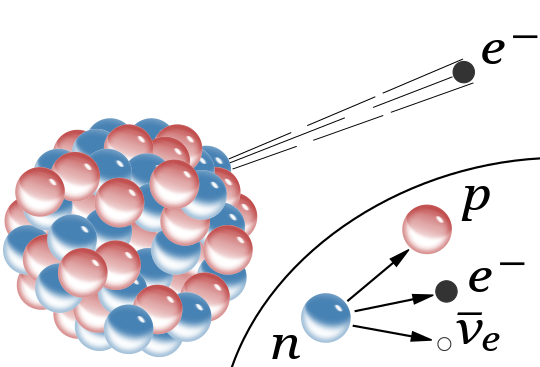On February 27, 1932, British physicist James Chadwick made a groundbreaking announcement that would revolutionize the field of nuclear physics. He had discovered a subatomic particle with no electric charge, which he named the neutron. This discovery had far-reaching implications, not only in terms of our understanding of atomic structure but also in the development of nuclear energy and military technology.
At the time, the prevailing model of the atom was known as the “plum pudding” model, proposed by J.J. Thomson in 1904. According to this model, the atom consisted of a positively charged “pudding” with negatively charged electrons embedded in it like “plums.” However, there were still unanswered questions about the nature of the atomic nucleus and the forces that held it together.
Chadwick’s discovery of the neutron provided the missing piece of the puzzle. He conducted a series of experiments using a technique called “scattering,” in which he bombarded various elements with alpha particles. By carefully analyzing the results of these experiments, Chadwick was able to deduce the existence of a neutral particle with a mass similar to that of a proton. This particle, which he named the neutron, was found to be located within the atomic nucleus.
The discovery of the neutron had profound implications for our understanding of atomic structure. It revealed that the atomic nucleus was composed of positively charged protons and neutral neutrons, with negatively charged electrons orbiting around them. This new model, known as the “nuclear model,” provided a more accurate representation of the atom and paved the way for further advancements in nuclear physics.
Chadwick’s discovery also had practical applications. The neutron, being electrically neutral, was able to penetrate the nucleus of other atoms without being repelled by the positive charges within. This property made it ideal for inducing nuclear reactions. Scientists soon realized that by bombarding certain elements with neutrons, they could cause them to undergo nuclear fission, releasing a tremendous amount of energy. This discovery laid the foundation for the development of nuclear reactors, which harness the power of nuclear fission to generate electricity.
Unfortunately, the discovery of the neutron also had darker implications. The realization that atomic nuclei could be split apart by bombarding them with neutrons opened the door to the development of atomic bombs. This led to a race among nations to harness the power of nuclear fission for military purposes. The devastating effects of the atomic bombings of Hiroshima and Nagasaki during World War II served as a stark reminder of the destructive potential of this technology.
In recognition of his groundbreaking discovery, James Chadwick was awarded the Nobel Prize in Physics in 1935. His work not only advanced our understanding of atomic structure but also had a profound impact on both energy production and military technology. The discovery of the neutron paved the way for the development of nuclear reactors, which now provide a significant portion of the world’s electricity. It also ushered in the atomic age, forever changing the course of human history.
In conclusion, the discovery of the neutron by James Chadwick in 1932 was a monumental achievement in the field of nuclear physics. This subatomic particle with no electric charge provided crucial insights into the structure of the atom and opened up new possibilities for energy production and military technology. Chadwick’s work continues to shape our world today, reminding us of the profound impact that scientific discoveries can have on society.
SEO Excerpt:
Discover the significance of James Chadwick’s groundbreaking discovery of the neutron in 1932. Learn how this subatomic particle revolutionized our understanding of atomic structure and paved the way for the development of nuclear energy and atomic bombs. Explore the historical context and implications of this pivotal event in the field of nuclear physics.

